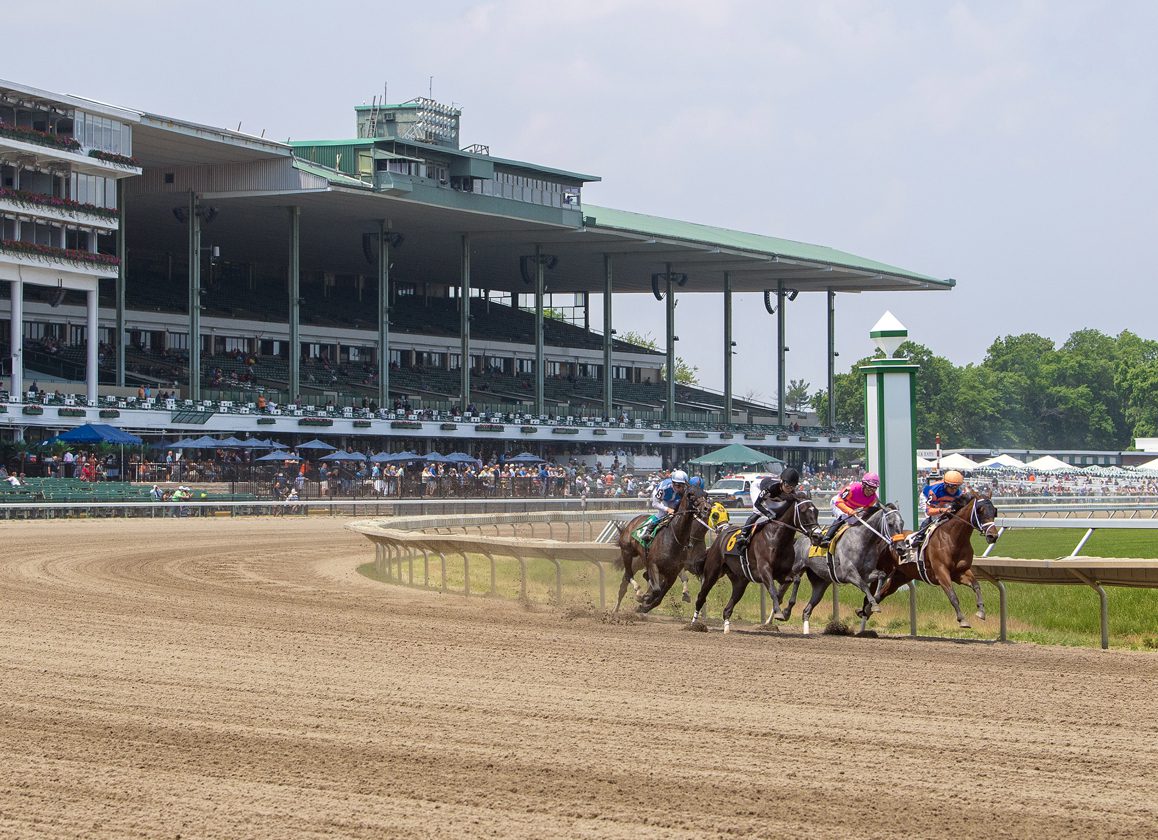By Bill Finley
The year 2023 was a pretty rough one for the sport of horse racing, and there was little to suggest that this year would be any different. The sport seems to be caught in a downward spiral as we move from one crisis to another and are left to wonder “what next?”
So far this year, the answer to that question is that maybe things will be better in 2024 than we might have thought. There have been several recent positive developments for the sport, many of them having to do with state governments investing in the game's future.
We learned last week that the New Jersey Senate joined the state's Assembly in passing a bill that would extended a $10-million annual purse subsidy through 2029. Governor Phil Murphy is expected to sign the bill. New Jersey is one of only a handful of states where the racing industry does not receive revenue from gaming. Without the $10 million, Monmouth's purses wouldn't be large enough to compete with tracks in neighboring states. According to the Daily Racing Form, Monmouth distributed $31 million in purses over 56 live racing days, for an average of $553,000 a day, the highest in its history, with one-third of that money coming from the subsidy.
It wasn't that long ago that Monmouth was operated by the state and then Governor Chris Christie threatened to shut the track down. In 2011, he said that Monmouth would “disappear” if private management wasn't put in place at the state-owned facility.
The news out of New Jersey was just the latest example of a state government showing that it believes in the future of the sport. In Maryland, Governor Wes Moore endorsed a plan authored by the Maryland Thoroughbred Operating Authority that will overhaul racing in Maryland. The proposal, which is dubbed “Pimlico Plus,” would mean a re-envisioned Pimlico site, with a new clubhouse, stables for 700 horses, a 1,000-seat event space, 2,000-car parking garage, veterinary facilities, a possible hotel and other new amenities. Laurel will close once the new Pimlico is ready to open for business and a new training facility will be built at a site that has yet to be determined.
Pimlico Plus has a hefty price tag. According to the Baltimore Banner, the new Pimlico will cost between $274 million and $284 million, while the new training facility would cost about $113 million. In 2020, the Maryland General Assembly approved the sale of $375 million in bonds for capital improvements for Pimlico and Laurel. The projects that were on the table at the time stalled, but the $375 million is still available and, with legislative approval, can be used to rebuild Pimlico.
The deal would require 1/ST Racing and Gaming, which owns Pimlico Race Course and Laurel Park, to transfer ownership of Pimlico to the state, and for 1/ST Racing to cede control of its day-to-day Thoroughbred operations to a non-profit entity as of Jan. 1, 2025. The non-profit entity would be structured so that it is similar to the New York Racing Association. 1/ST Racing will retain the rights to the GI Preakness S. and the GII Black-Eyed Susan S., which it would license to the non-profit operating authority.
The Maryland deal was announced about eight months after New York Governor Kathy Hochul's budget included a $455- million loan to NYRA that it will use to build a new Belmont Park, which is expected to open in 2026. Hochul did so despite fierce criticism from some advocacy groups, including PETA, that questioned the move. Victor Matheson, a Holy Cross College professor and expert on sports economics told the New York Post, “Basically it looks like with this project, you're kind of hitching your wagon to an industry that is in long-term decline.”
Belmont was last refurbished in the sixties and is a mammoth structure built during an era when 35,000 people might show up to the track on a Saturday afternoon. It is also not winterized, the primary reason why the Breeders' Cup has not been run at Belmont since 2005. New York racing needed a new Belmont and needed to consolidate so that there was just one downstate track. Thanks to Hochul, it's going to happen.
In October, Keeneland announced a major capital investment project highlighted by the construction of a permanent paddock building. Once again, a state government came forward to help with the costs. Keeneland is working with state and local government to secure incentive funds to support the project, which is expected to cost nearly $93 million. Already, upon the recommendation of the Tourism, Arts and Heritage Cabinet, Keeneland received preliminary approval from the Kentucky Tourism Development Finance Authority for incentives to support the project totaling up to $23.2 million.
“Keeneland is a historic destination for our local families and travelers, and this exciting investment will create more opportunities for everyone to enjoy, while boosting our signature horse racing industry and Kentucky's $12.9 billion tourism industry,” said Gov. Andy Beshear. “The horse racing industry is as indispensable to our economy as it is to our culture, and after a record-breaking year for tourism in 2022, leaders like Keeneland are going to help ensure Kentucky's success continues for years to come.”
Last week, we also learned that the purse for the Kentucky Derby has been raised to $5 million. It was $3 million. In addition, the 2024 spring meet at Churchill will offer purses totaling more than $25 million or a 25% increase over 2023.
This happened because Kentucky racing has never been healthier. Revenue from Historical Horse Racing Machines has created huge purses in the state. Maiden special weight races at Churchill Downs went for $120,000 and allowance races were worth $141,000 last fall.
“These record purse increases are a symbol of the health of horse racing in Kentucky,” Bill Carstanjen, CEO of Churchill Downs Incorporated said when announcing the Derby purse increase. “Churchill Downs Incorporated's over $1-billion investment into live and historical horse racing in Kentucky over the last five years has meaningfully strengthened the entire Kentucky Derby Week and year-round racing program. It's important to acknowledge the state legislature for its commitment to working closely with private enterprise in a truly collaborative partnership to support the continued growth of Kentucky's signature industry.”
None of this means that 2024 will be perfect or that we shouldn't brace ourselves for the next set of problems. But this sport is resilient, as the recent developments have shown. Let's hope for more of the same in 2024.
Triple Crown Purses
Churchill Downs was not the only track to raise the purse for its Triple Crown event. The purse for the GI Belmont S. has been increased to $2 million from $1.5 million. That's a step in the right direction, but it's not enough. Along with the Breeders' Cup, the Triple Crown races are supposed to be the sport's most important events. Their purses should reflect that. All three races should have purses of $5 million. As of now, there is a gap between the Derby and the $1.5-million Preakness and the Belmont, which isn't good for the Triple Crown. There should be enough money out there to have three $5-million races.
Not a subscriber? Click here to sign up for the daily PDF or alerts.






